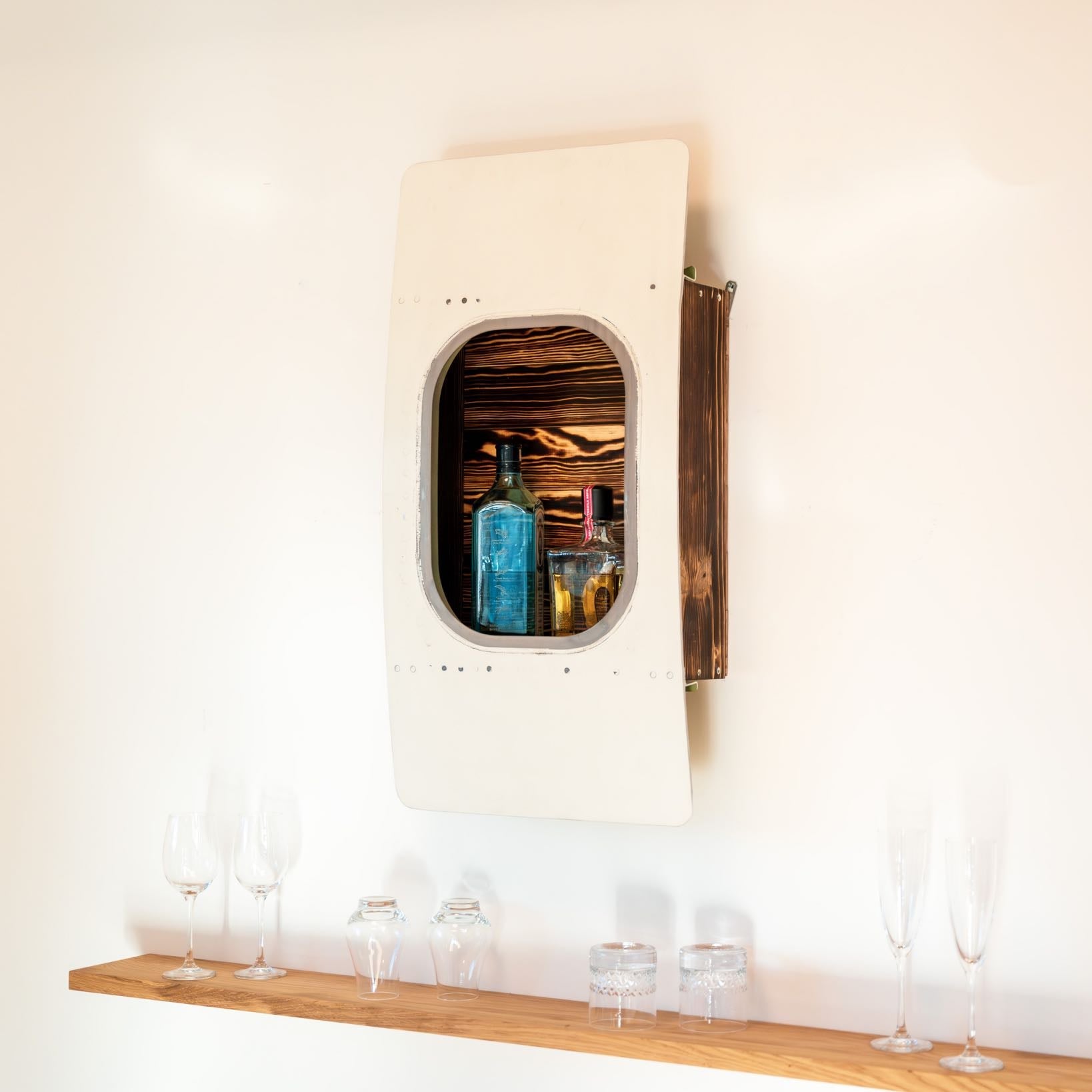How do you attach airplane windows and wall bars?
Aircraft windows are among the most striking design elements in aircraft and aviation furniture. They are often made from original components and are used in living spaces, offices, or themed commercial spaces. For an aircraft window to be securely and visually harmoniously mounted on a wall, the choice of mounting location, the appropriate fastening technology, and careful execution are crucial. This article explains how aircraft windows can be professionally installed, which wall types have special requirements, and which planning aspects must be considered in advance.
Suitable locations FOR aircraft windows
Aircraft windows can be used in many different interior design concepts. They can be used individually or in combination with other aircraft furniture, such as an aircraft trolley, an onboard storage box, or an aviation-style wall bar. They are popular in living areas, offices, or reception areas of companies with an aviation connection. They also offer a wide range of design options as gifts for pilots or anyone interested in aviation. When choosing a mounting location, not only aesthetics but also technical feasibility are important. A stable wall structure is just as important as a favorable position in terms of light and visibility.
Preparation for assembly
Before starting work, the weight of the aircraft window should be known in order to select suitable mounting materials. The wall structure should be checked, as concrete, masonry, drywall, or wood require different mounting methods. Precisely marking the mounting points ensures that the aircraft window hangs straight. Proper installation typically requires a drill, spirit level, ruler, screwdriver, and suitable dowels and screws. Keep these tools handy to avoid interruptions.
Important criteria when choosing a location:
-
Load-bearing capacity and condition of the wall
-
Suitable height and orientation in the room
-
Matching environment to other furniture or decorative elements
Overview of fastening systems for aircraft furniture
For concrete and masonry walls, direct mounting with dowels and screws is a proven method. Holes are drilled to match the dowel size, the dowels are inserted, and the aircraft window is screwed in place. For drywall walls, hollow wall or metal expansion anchors are necessary, as these provide better load distribution. For very heavy models, additional reinforcement in the stud frame may be required. In some cases, mounting rails are used to allow flexible positioning of the window or to easily remove it if necessary. A more discreet option is concealed mounting with retaining plates or brackets on the back of the frame.
Installation depending on the wall type
For concrete or solid brick walls, standard or heavy-duty anchors can be used, reliably supporting the weight. It is important to match the drill diameter precisely to the anchor size. For drywall constructions, it is important to determine in advance whether the attachment points align with the supporting profiles. If not, additional reinforcement is recommended. Wood or panel walls allow direct screwing. To avoid splintering, pre-drilling should always be used. For thin panels, strips mounted behind the cladding can increase stability.
Safety aspects of wall mounting
Depending on their design, aircraft windows can be heavy. A stable installation reduces the risk of the window becoming loose over time. In public or high-traffic areas, securing it against unauthorized removal is advisable. Furthermore, the attachment points should be checked regularly to detect wear or loosening early on.
Design and integration
Airplane windows are effective both as individual pieces and in combination with other aircraft furniture. They can serve as a visual highlight above an aircraft trolley, and next to an aviation-style wall bar, they create thematic unity. Multiple windows mounted in a row also create an impressive design line reminiscent of an aircraft's cabin. Lighting can enhance the effect. LED strips behind the frame or directed spotlights provide targeted accents. Heat generation should be considered to avoid damaging the material's surface.
Conclusion
Wall mounting aircraft windows requires careful planning, consideration of the wall's characteristics, and the selection of suitable fastening technology. With proper preparation and reliable execution, aircraft windows can be harmoniously integrated into a variety of room concepts – both in private residential areas and in commercial properties with an aviation theme.



